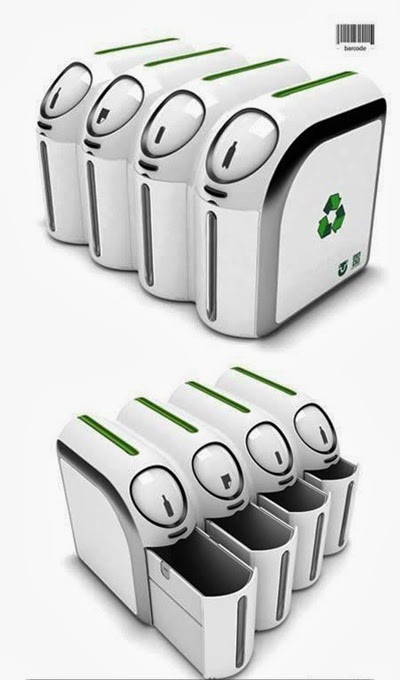What did you do to the used batteries? Almost all will answer, throw it into the trash. Used batteries are hazardous waste so that they should not be thrown away carelessly.
All types of used batteries such as batteries in the remote, toys, watches, cell phones, digital cameras and batteries that can be charged (rechargeable) including hazardous material.
When a carelessly discarded or not recycled, the content of heavy metals and other hazardous substances that exist in the battery can pollute water and soil, which ultimately harm the human body.
Why used batteries should not be thrown away carelessly?
Batteries contain various heavy metals such as mercury, manganese, of lead, nickel, lithium and cadmium.
If the battery is carelessly discarded the heavy metals contained in them will pollute groundwater and endangering the health of the population.
If the water is contaminated with heavy metals used by society can lead to chronic illness that will cause interference in the central nervous system, kidneys, reproductive system, and even the cancer.
The effect is long-term effects. And usually people would be more concerned if it appears that the effect in the short term.
How to manage waste used batteries?
Supposedly used battery waste is managed specifically and separately from other waste.
Existing technology is hazardous waste will be dumped in the soil that already has other chemicals to be neutralized and destroyed so as not to pollute the environment.
To address this waste should be aware of all the first, either from the public, waste management and also because of the government's complex problems. Usually the only people who really aware of that does this.
What are the dangers of used batteries?
Waste batteries not only cause pollution but also endangering natural resources it has heavy metals and corrosive electrolyte into the battery power source, such as lead, mercury, nickel, cadmium, lithium, silver, zinc and manganese
Under the action of microorganisms, inorganic mercury can be transformed into methylmercury, fish congregate in the body which are then consumed by humans. Methylmercury can enter brain cells and have serious consequences such as damage to the nervous system that can make people become crazy, or even cause death.
While cadmium batteries can contaminate the soil and water, which eventually enter the human body causing liver and kidney damage, can also cause soft bones or heavy bone defects.
Additionally, cadmium can cause chronic poisoning and a reason causing emphysema (chronic obstructive pulmonary disease that involves damage to the air sacs in the lungs), osteomalacia (softening of the bones), anemia (lack of blood), also making paralysis in the human body.
Excretion of lead is also the most difficult in the human body and can impair kidney function and reproductive function.
If the battery waste mixed with other solid wastes, from time to time malicious content in it can contaminate water and soil, which then threatened the lives of fish, plants, environmental destruction and indirectly threaten human health.
All types of used batteries such as batteries in the remote, toys, watches, cell phones, digital cameras and batteries that can be charged (rechargeable) including hazardous material.
When a carelessly discarded or not recycled, the content of heavy metals and other hazardous substances that exist in the battery can pollute water and soil, which ultimately harm the human body.
Why used batteries should not be thrown away carelessly?
Batteries contain various heavy metals such as mercury, manganese, of lead, nickel, lithium and cadmium.
If the battery is carelessly discarded the heavy metals contained in them will pollute groundwater and endangering the health of the population.
If the water is contaminated with heavy metals used by society can lead to chronic illness that will cause interference in the central nervous system, kidneys, reproductive system, and even the cancer.
The effect is long-term effects. And usually people would be more concerned if it appears that the effect in the short term.
How to manage waste used batteries?
Supposedly used battery waste is managed specifically and separately from other waste.
Existing technology is hazardous waste will be dumped in the soil that already has other chemicals to be neutralized and destroyed so as not to pollute the environment.
To address this waste should be aware of all the first, either from the public, waste management and also because of the government's complex problems. Usually the only people who really aware of that does this.
What are the dangers of used batteries?
Waste batteries not only cause pollution but also endangering natural resources it has heavy metals and corrosive electrolyte into the battery power source, such as lead, mercury, nickel, cadmium, lithium, silver, zinc and manganese
Under the action of microorganisms, inorganic mercury can be transformed into methylmercury, fish congregate in the body which are then consumed by humans. Methylmercury can enter brain cells and have serious consequences such as damage to the nervous system that can make people become crazy, or even cause death.
While cadmium batteries can contaminate the soil and water, which eventually enter the human body causing liver and kidney damage, can also cause soft bones or heavy bone defects.
Additionally, cadmium can cause chronic poisoning and a reason causing emphysema (chronic obstructive pulmonary disease that involves damage to the air sacs in the lungs), osteomalacia (softening of the bones), anemia (lack of blood), also making paralysis in the human body.
Excretion of lead is also the most difficult in the human body and can impair kidney function and reproductive function.
If the battery waste mixed with other solid wastes, from time to time malicious content in it can contaminate water and soil, which then threatened the lives of fish, plants, environmental destruction and indirectly threaten human health.














